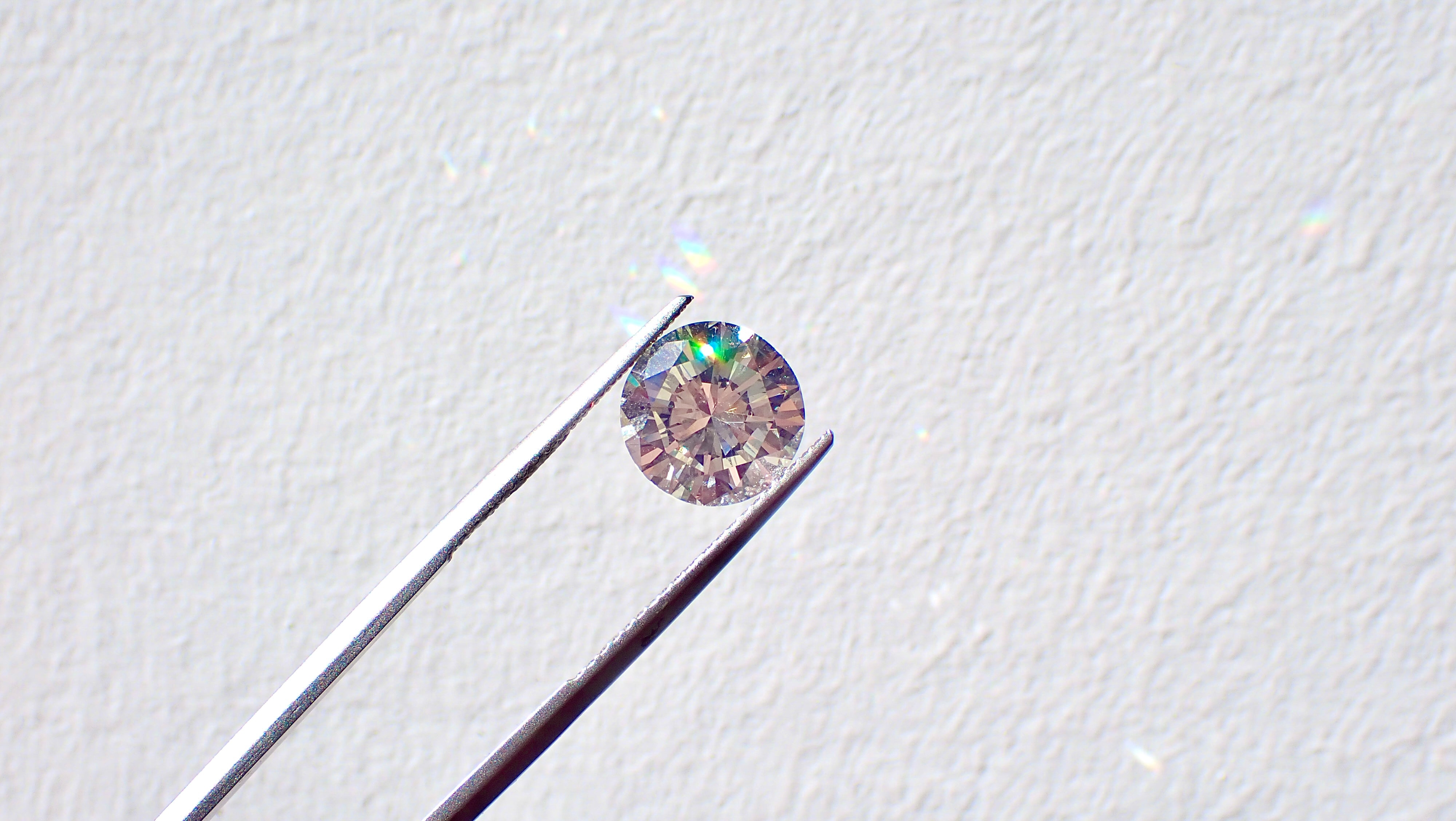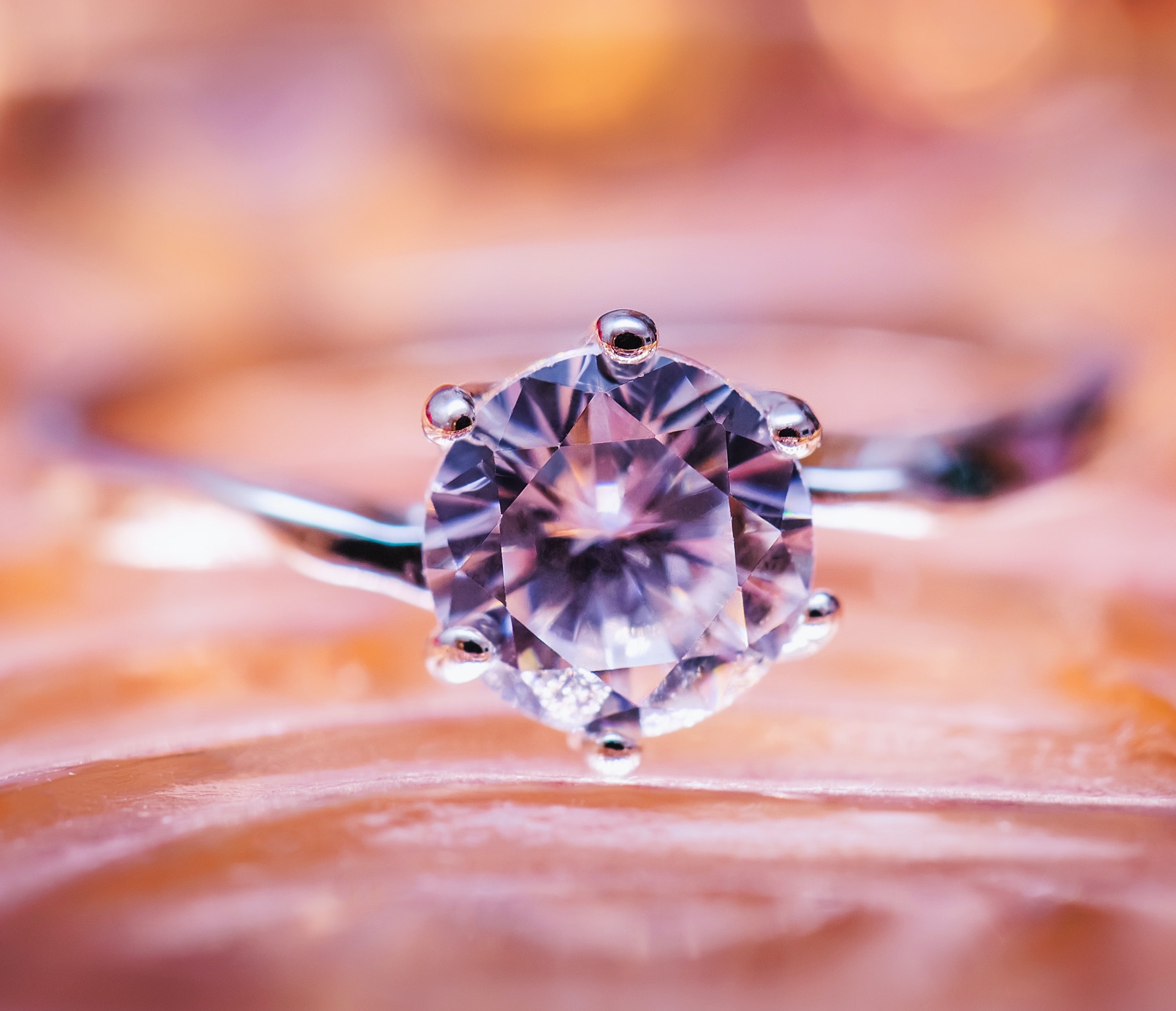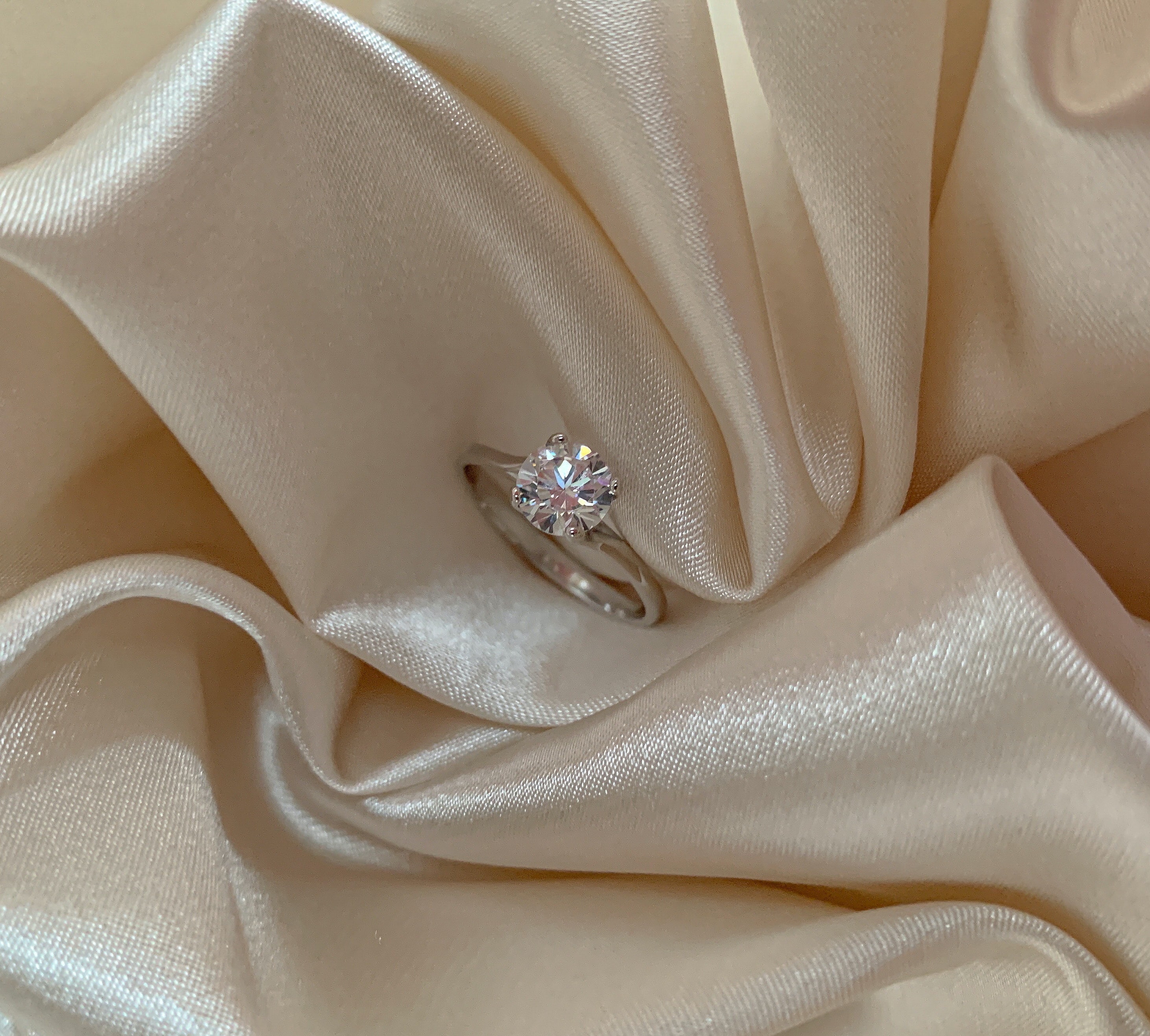- Call us: (213) 489-1767


Nothing says bling like a gorgeous diamond. The stunning display in the jeweler’s window is surely temptation enough because every diamond shoots fire to attract the eye. As a customer, undoubtedly you listen to the jeweler’s advice but you’ll almost always go with your gut and pick the one you simply like the look of most. This doesn’t necessarily mean you make the best choice in terms of quality and value for money.
The world of diamonds is highly regulated with numerous rules, grading scales, and different classifications that go far beyond what can be seen with the naked eye. These regulations help diamond experts and customers tell the difference between something that is internally flawless, very good, very slightly blemished, or even poorly cut and suffering from too many blemishes to be a worthy investment.
The size of the diamond, diamond carat weight/carat size of the stone, diamond color, and diamond cut is always going to be a matter of personal preference for the buyer, but the system of diamond grading that is used to give you an idea of what is technically great and what is not so great is known as the 4 Cs of diamonds.
Here is a guide to the 4Cs of diamond grading. Hopefully, it will help you find the perfect diamond for your diamond engagement ring or another piece of important jewelry!
What Are The 4 Cs?
The 4 words beginning with C that are included in the grading system are color grade, clarity grade, carat weight, and cut grade.
All of these elements of a gemstone are individually assessed by an expert appraiser, and any flaws and blemishes are noted which ultimately result in a final grading that provides a guide to the customer of the overall quality of a diamond. This overall rating will then have an impact on the diamond’s value.
Stones with the fewest inclusions, best diamond clarity, best diamond shape, and most excellent cut, as well as being on the ideal end of the color scale, will always be the most sought after when it comes to diamond buying.
Each diamond sold in the USA should be accompanied by a certificate from the Gemological Institute of America or the American Gem Society that provides details of and verifies the 4Cs.
Here is some more detailed information about each of the 4 Cs and how they help you choose a diamond.

Cut
The cut of a diamond is the only component measured in the 4 Cs grading system that isn’t influenced by the stone’s natural formation. It is a result of the skill of the cutter. This is why diamond cutters and the Gemological Institute of America consider cut to be the most important of the 4 Cs.
This factor refers to the quality of the diamond’s cut, not the size or shape of the stone. It is more related to how proficiently the stone is faceted, polished, and proportioned.
The quality of a diamond’s cut will also have a huge impact on how the stone interacts with light, and this is known as brilliance. The better a diamond can return to your eye (bling and sparkle), the more brilliant it is and the better its cut is.
The GIA system assesses diamond cuts as Excellent, Very Good, Good, Fair, and Poor.
Though cut doesn’t have as big of an impact on overall price as something like carat weight, it is important to find the most ideal cut possible because, after all, the main objective of buying a diamond is to have it sparkle, not whether it is a larger diamond!
Put simply, cut is the most important factor influencing the beauty of a diamond so should be given priority over the other Cs. No matter what kind of diamond shape you are looking for, the cut should be the first C that you consider, followed by color, then clarity, then carat based on your budget.

Color
The colors of diamonds are categorized on a lettering scale of D to Z. On this scale, Z refers to a completely colorless diamond and therefore the most expensive, then down to D which is a less expensive stone that will possess a distinctly yellow hue.
In general, the standard color quality of diamonds that people buy usually falls between D and J grades.
Interestingly, the shape of a diamond can also have a bearing on where it ends up on the color scale. For example, a brilliant round diamond can hide color very well, which means that customers can go further down the scale without sacrificing too much eye-clean quality.
On the other hand, longer diamond shapes like the radiant or the oval are prone to revealing tints of color much quicker and easier. This is something to keep in mind when browsing the diamond market.
Please note, that the color grading scale mentioned here refers to clear diamonds only. Different color diamonds such as blue and red etc. have a completely separate grading system of their own.

Clarity
The clarity of a diamond is determined by the number of natural imperfections (known as inclusions) that are present in the stone, and whether you can see them with the naked eye or only under extreme 10x magnification.
The GIA grading scale for clarity runs from Flawless (FL) to Included (I). The thing to remember with the particular C, however, is that a diamond does not have to be right at the top of the flawless end of the scale to look perfect.
If the stone looks ideal to the naked eye, then there is nothing to stop you from buying it and being very happy with it. There are often instances when an SI1 (Slightly Included) stone has very little discernible difference from a VVS2 (Very Very Slightly Included) or even a VVS1. If you are lucky enough to find such a stone, you can save yourself a considerable amount of money.
Of all 4Cs, it’s probably fair to say that clarity is the category of grading most susceptible to personal preference. If you are buying a stone for yourself and your naked eye cannot detect the kinds of inclusions that it is supposed to have, then go ahead and grab yourself a relative bargain!
On the whole, though, diamond experts recommend that you stick to SI1 and above on the scale.
Carat
Carat is the name of the measurement that is assigned to show you the actual weight of the diamond. It might be expressed as the weight of a single stone or a combined weight of several stones. For example, an engagement ring with a single center stone versus an eternity ring channel set with numerous pave cut diamonds.
By GIA standards, one carat is equal to 0.2 grams. For reference, that is about the same weight as a single normal metal paper clip!
The larger the carat size, the more expensive the diamond is going to be. Because no two natural diamonds are ever completely identical, carat should be viewed purely as a guideline because it can only determine the weight of a stone rather than its actual physical size - that will always be subject to the shape and the cut.
For example, you can have five different diamonds, all oval and all 2 carats in weight. Even though they share the same carat and have the same color, clarity, and cut, they will all be slightly different sizes and shapes due to the natural contours of cutting. In a situation like this, you will then want to refer back to all of the other Cs to try to establish which of the 2-carat stones is the most desirable.

The 4Cs Working Together
After learning the basics above, you can see you do not have to be a gemologist to be able to discern diamond quality, with or without a jeweler’s loupe. Each four C contributes to the overall beauty of a diamond. Their combination is what makes every stone unique. When you assess diamonds, their grading reports will provide the details but your decision should be based on the organic whole, the result of all 4Cs working together.
The best order in which to assess your potential purchase is
- Cut - look at the stone’s scintillation, how much fire it produces, and its brilliance. With an exceptional cut, you might be able to compromise on color or clarity.
- Color - look for stones that are as white as possible to the naked eye. Color should not interfere with or distract from the light reflection from the diamond.
- Clarity - a stone should be eye-clean. Diamonds with inclusions and blemishes are still brilliant and flash fire.
- Carat - weight is the least important factor. The largest diamonds can be full of inclusions or be poorly cut so they don’t truly show off their magical properties. If you balance cut, color and clarity, you should get a fantastic-looking diamond of the largest carat weight for your budget.
If you follow the fundamentals, even a novice can make a brilliant purchase and get a stunning stone.
